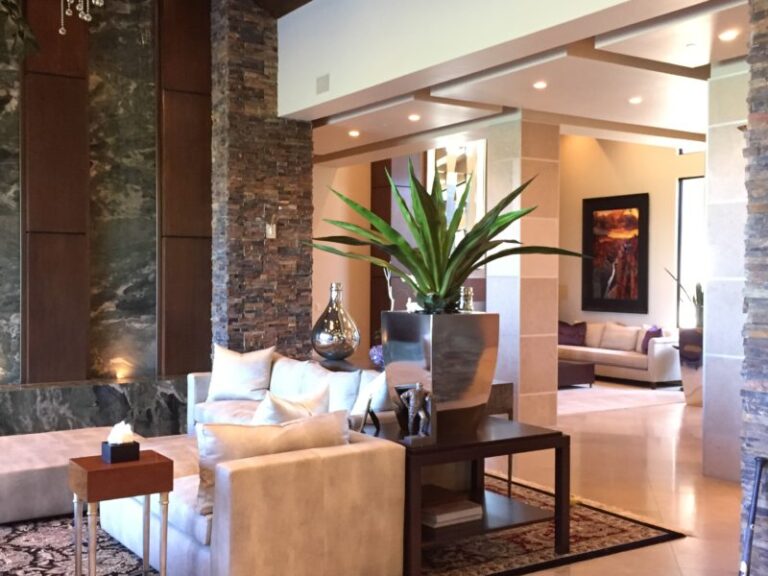
Unlocking the Budget Blueprint: The Creative Guide to Interior Design Cost Estimation
Embarking on an interior design transformation? Whether you’re envisioning a cozy refresh or a complete home makeover, one truth stands firm—without a solid budget, your dreams can turn chaotic. A well-structured interior design cost estimation isn’t just a smart move—it’s your project’s North Star, guiding you from idea to execution with clarity and confidence. For more precise planning, you can explore various
that simplify the budgeting process.
Demystifying Interior Design Expenses
Understanding the components that shape interior design cost estimation is essential to building a realistic plan and staying financially grounded throughout the project.
What Really Drives the Costs?
Several core elements contribute to your final price tag:
- Project Scale: A single-room redesign costs less than a multi-room overhaul or structural remodel.
- Design Complexity: High customization, intricate layouts, or luxury finishes often demand a higher budget.
- Location & Labor: Labor rates and material availability can vary by region, affecting your bottom line.
Common Designer Pricing Models
When working with a professional, you’ll encounter a few typical pricing methods:
- Hourly Billing – Ranges from $50 to $200+, depending on experience.
- Flat Fee – A single, upfront amount for the entire scope of work.
- Percentage of Project – Commonly 10–30% of the total budget, aligning incentives with the outcome.
Your Blueprint for Accurate Cost Estimation
Before finalizing your design, review expert-approved
to refine your plan. Knowing where your money goes is empowering. Here’s how to break it down.
Build an Itemized Budget
Organizing your budget by category clarifies your priorities:
- Furniture – Beds, sofas, dining sets
- Lighting – Fixtures, lamps, chandeliers
- Décor – Art, mirrors, rugs, accent pieces
- Materials – Flooring, tile, wallpaper, paint
- Labor – Contractors, electricians, carpenters
- Consultation Fees – Design plans, space planning
Assign a dollar range to each based on your needs and preferences.
Tools to Get You Started
Use these online resources to begin your interior design cost estimation:
- HomeAdvisor or Houzz Cost Guides – Browse averages by project type.
- Design Fee Calculators – Input room size, complexity, and material levels to get a ballpark figure.
These tools aren’t substitutes for professional advice—but they give you a smart starting point.
Pro Budgeting Hacks to Stretch Every Dollar
Interior design on a budget isn’t about cutting corners—it’s about working smart.
Prioritize High-Impact Features
Spend where it matters most. Some of the best return-on-investment areas include:
- Statement lighting
- Quality flooring
- Key furniture items like sofas and beds
Embrace DIY Where Possible
You don’t need to outsource everything. Save money by:
- Painting walls or cabinets yourself
- Assembling furniture
- Installing hardware
Hunt for Deals
When you’re unsure about how to begin, browsing popular
might spark new ideas. Stay savvy with your purchases:
- Use second-hand markets and vintage shops
- Sign up for designer outlet emails
- Watch for seasonal sales and clearance events
Always Budget for Surprises
Set aside 10–20% of your total budget for unexpected expenses. Think of it as a safety net that keeps the project moving even when surprises arise.
Navigating the Designer Relationship Smoothly
Working with a designer can elevate your space—but collaboration is key.
How to Set the Stage for Success
- Do Your Research: Look at portfolios, styles, and reviews.
- Set Clear Expectations: Be honest about your budget and must-haves.
- Request Transparency: Ask for itemized proposals and breakdowns.
- Communicate Often: Regular check-ins help avoid misunderstandings.
Interior design cost estimation is more than just math—it’s a communication tool that aligns your team with your goals.
Extra Tips: What People Often Overlook
Here are often-forgotten elements to factor into your interior design cost estimation:
- Permit Fees: Required for structural or electrical work
- Delivery Charges: For furniture or oversized items
- Storage Costs: During extended remodels
- Styling Accessories: Final touches like books, trays, and pillows
Not accounting for these can throw off your entire estimate.
Frequently Asked Questions (FAQ)
How do I start my interior design cost estimation?
Begin with a list of desired changes. Use online tools to get rough averages, then consult a designer for professional input.
Is hiring a designer worth the cost?
Yes, especially for complex projects. A designer can help you avoid costly mistakes and make smarter investment choices.
Can I reduce costs without sacrificing style?
Absolutely. Focus on key design elements, reuse existing furniture, and explore budget-friendly materials.
How often should I revisit my budget?
Review it at each stage: planning, shopping, and execution. Interior design cost estimation is not static—it evolves with your project.
What’s the biggest hidden cost?
Labor and delays. Always confirm labor quotes and add contingency time to avoid last-minute stress.
Summary List: Interior Design Cost Estimation Checklist
- Define project scope
- Choose a pricing model (hourly, flat fee, or percentage)
- Create an itemized budget
- Use estimation tools
- Prioritize key features
- Explore DIY opportunities
- Shop strategically
- Set a contingency fund
- Review budget throughout the process
Many successful interior designers credit their growth to smart branding and an effective online presence strategy. By investing time and thought into your interior design cost estimation, you’re setting yourself up for a rewarding journey—one filled with creative energy, practical decisions, and a space that truly feels like home.